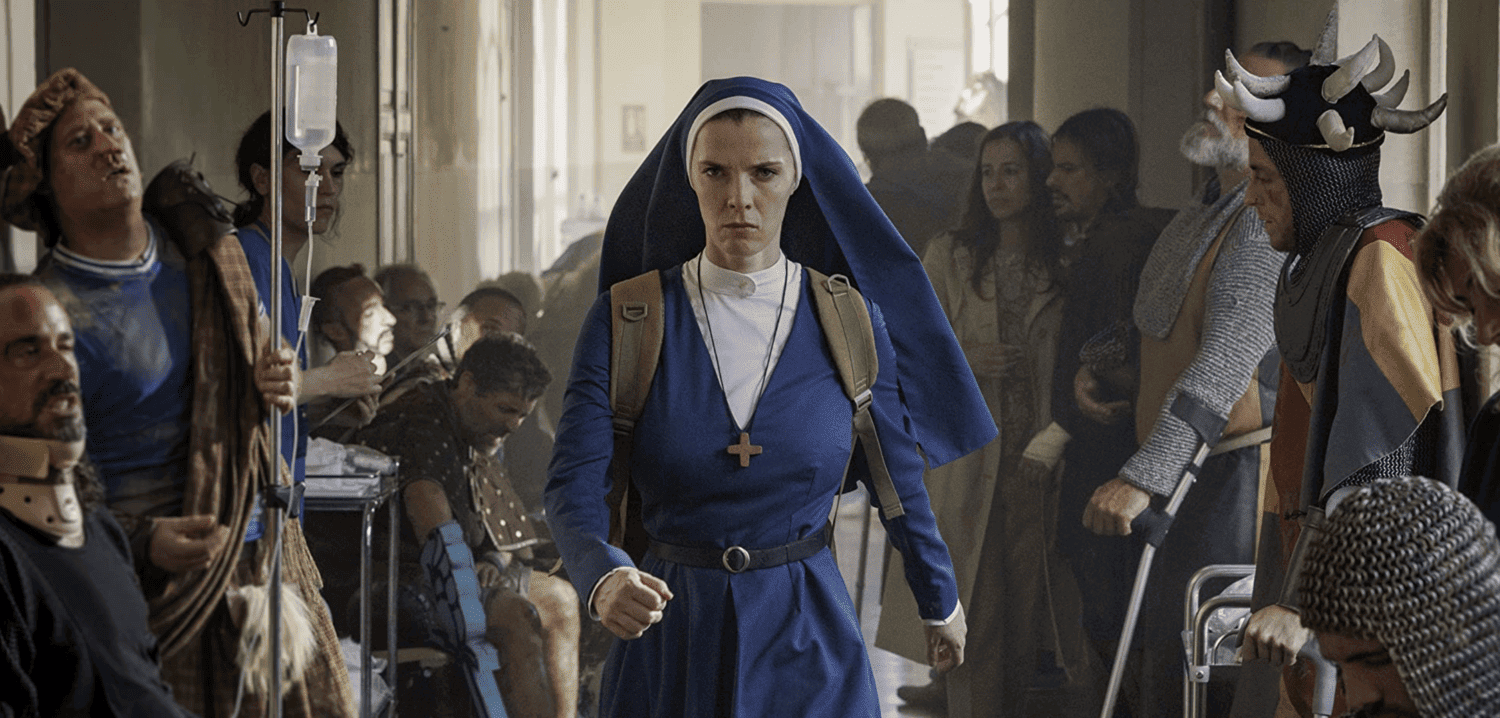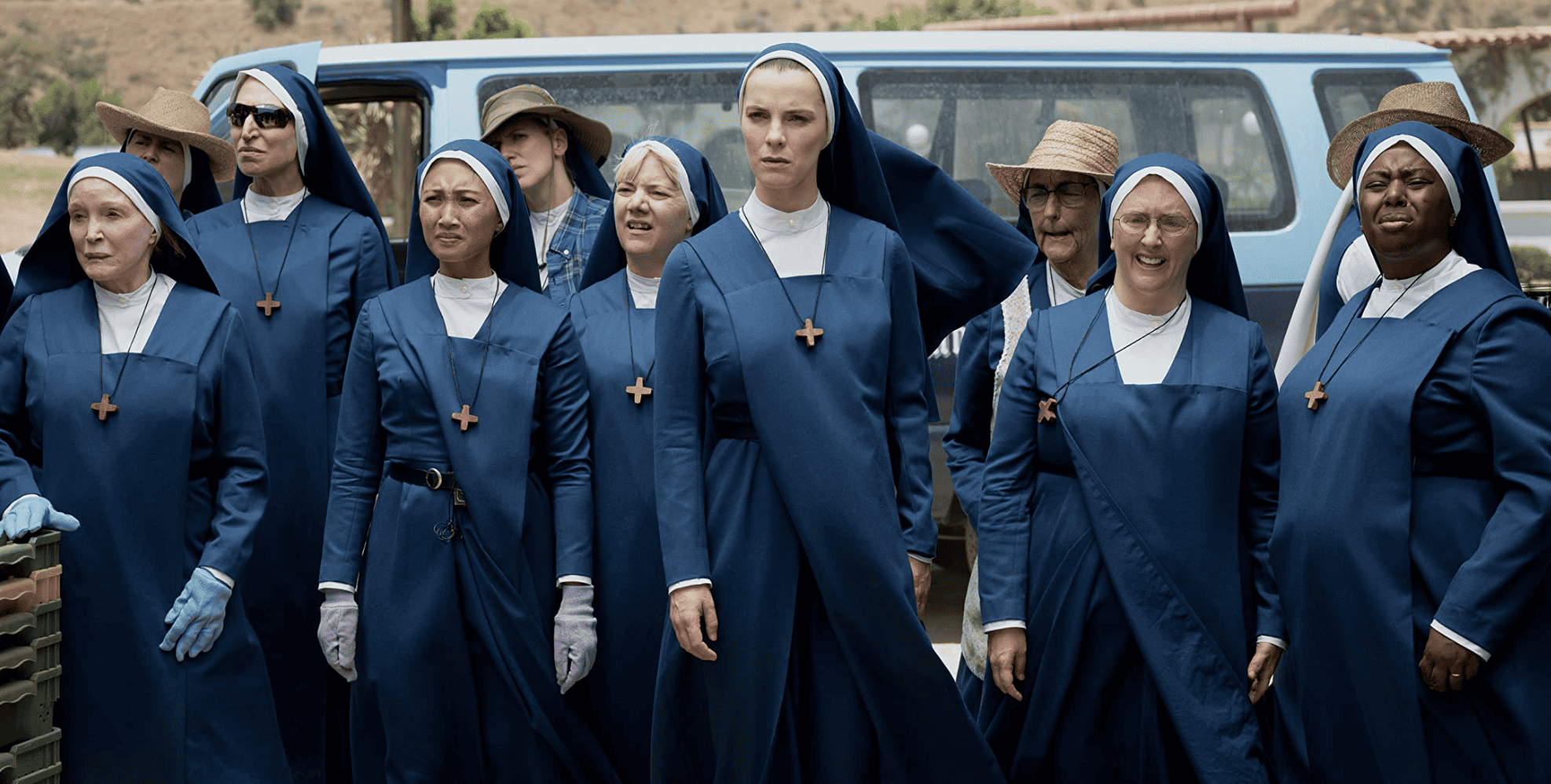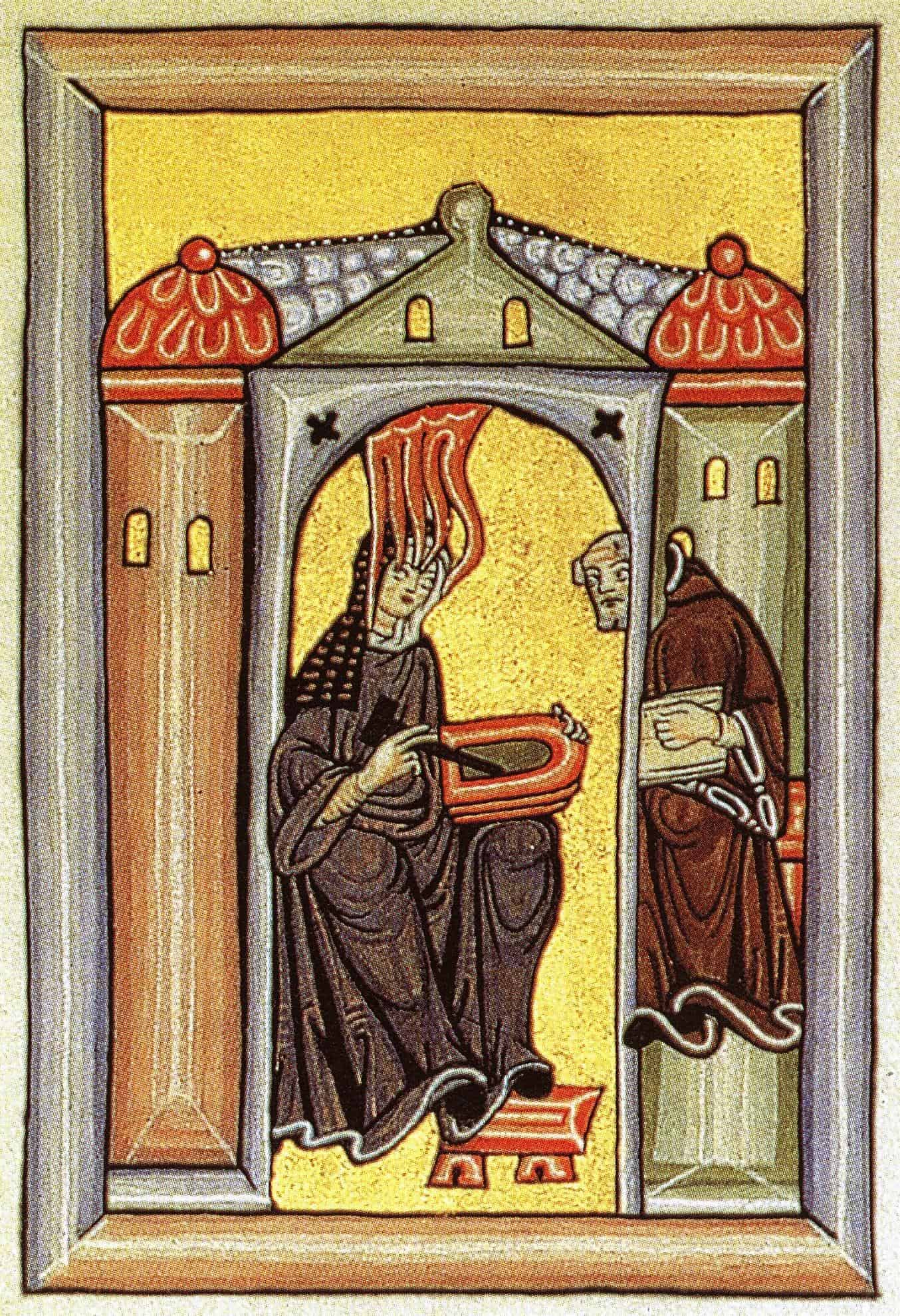
The idea of a Holy Grail has captured the imagination of Western artists for roughly the last millennium. Since the late 12th century, when French narratives of King Arthur and knights-errant approached an apex of popularity, this mythical object of untold divine power has come to influence countless poems, paintings, novels, video games, films, and so much more.
The Grail's original significance as a religious relic stems from its purported use as the vessel Jesus used at the Last Supper and into which his blood was collected while on the cross, but a metaphorical “holy grail” exists today as a universal symbol for a goal pursued single-mindedly and frequently in vain. Peacock's new series “Mrs. Davis” takes part in this rich medieval tradition, modernizing the grail quest into something relatable and exploring what a holy grail might look like in the 21st century.
Getting Medieval
“Mrs. Davis” feels very much like a story from the European Middle Ages, especially at the beginning of the series, which opens in 1307 Paris. This date is significant because it's around the time the illustrious and fabled Knights Templar collapsed with the execution of Grand Master Jacques de Molay by the King of France, Philip IV. Any link between the Templars and the Grail is a fictional association, however, like the one established in Dan Brown's “The DaVinci Code.” The Knights Templar are not historically known as guardians of the Grail, but they are connected to the problematic Crusades that European leaders waged against the Middle East. Nonetheless, it certainly makes for good entertainment.
On the other hand, “Mrs. Davis” takes a feminist twist on the Templars, and instead of beginning with a quest in 1307, audiences know the Grail is in the hands of a few exceptionally powerful women.

Fast forward some 700 years, and Sister Simone (Betty Gilpin), a nun at the Our Lady of the Immaculate Valley convent, is the perfect protagonist for a medieval narrative. Simone checks so many boxes for the medieval genres of the Saint's Life — stories that recount the miracles, trials, and often martyrdoms of saints — and of the Romance — adventure narratives about the deeds of knights-errant that helped produce the idea of chivalry (which derives from the French word for knight, chevalier). For instance, her past is filled with magical events and a near-death experience. She renounces all of her earthly desires and takes up the cloth in her late 20s. This is textbook medieval, saintly behavior. Another example is Saint Thomas Becket, who was a successful businessman and tradesman first before he took his vow of poverty and devoted his life to the Church.
Jay Is Bae
So too does Simone's personal relationship with Jesus reflect the mystic writings of medieval women, especially in England. Julian of Norwich, Catherine of Siena, Hildegard von Bingen, and Margery Kempe, for example, all wrote about the divine visions they received and their intensely intimate moments with God, similar to the ones Simone experiences with her husband, Jay (Andy McQueen). Jay is, of course, short for Jesus.
After her conversion to Catholicism and the consummation of her marriage to Jay, Sister Simone can call on and meet with her husband almost whenever she likes, but she is simultaneously cognizant of Jay's many other wives. The way “Mrs. Davis” literalizes the intimacy between Simone and Jay, despite some bumps in the road, seems to have been drawn directly out of the mystic literature of the European Middle Ages.

Do You Accept the Terms and Conditions of This Quest?
“Mrs. Davis” embodies a type of medievalism, where a modern narrative reinterprets and adapts a medieval medium or story, not only as a way to rework the Holy Grail trope, but also to contrast the influence and power of the titular character, Mrs. Davis. She's an artificially intelligent software — like Siri, Alexa, or Scarlett Johansson's character from “Her” — that has eliminated war, famine, poverty, and other ills from modern society. Mrs. Davis' users take on quests of their own to earn points and gain their “wings,” an augmented reality prize that rewards users with prestige. In practice, the wings users earn are at once worthless in the real world yet invaluable because of the value placed on them in the digital world.
But not everyone loves the seemingly infinite power of Mrs. Davis. In fact, the central conflict of this series stems from Sister Simone's intense hatred of the beloved software. Our nun refuses to use human pronouns for Mrs. Davis, avoids any interaction with the technology, and actively tries to hinder the software's influence. Simone is assisted by her lifelong friend and former lover, Wiley (Jake McDorman), and his anti-artificial intelligence militia.
Despite her hatred for Mrs. Davis, however, Simone ultimately agrees to speak with Mrs. Davis, but not directly. She always uses an intermediary or someone using earbuds to communicate with Simone in place of Mrs. Davis. Rather than receiving orders from Jay or another more spiritual entity, Simone is asked by Mrs. Davis to search for the Grail. It's software, not a sovereign or a savior, that offers Simone her quest.
In both the medieval European literary tradition and modern narratives, protagonists often set off on a quest after being called to action by a greater earthly or celestial power. In the case of “Mrs. Davis,” Simone finds herself torn between two exceptional entities: the internet and the eternal. The nun finds herself driven throughout the series by her hatred for Mrs. Davis; her love for Jay and his father, and vice versa; and her awe of both. Regardless of her reticence to help the technology she hates most in the world, Sister Simone agrees to find the Grail for Mrs. Davis under the condition that the omnipotent AI “deletes” herself when the quest is complete. For Simone, the Grail quest has always been a matter of life and death, and Mrs. Davis accepts the demands.
Genre-Bending
Throughout their adventure, Simone and her cohort encounter unique characters, otherworldly presences, and bizarre moments whose dreamlike sequences are reminiscent of “The Big Lebowski” (1998), many Spike Lee joints, and some of Quentin Tarantino's films. “Mrs. Davis” seamlessly creates a world of magical realism in which sci-fi, fiction, and comedy work together to keep audiences equal parts entertained and surprised. Such an amalgamation of genres and themes is on par with both medieval literature and the other media inspired by it.
I'm reminded here of one of my favorite movies as a kid, “Monty Python and the Holy Grail” (1975), a caricature of the Middle Ages, but one created by a group of artists who had actually studied the texts and history of medieval Europe. Jokes about killer rabbits, plague, witches, and wars with the French all feature heavily in the film, but its absurdity is grounded firmly in the Middle Ages and seems to have created a genealogy we can trace to “Mrs. Davis,” whose magic tricks, kidnapped popes, jam-making nuns, and sacred relics feel as medieval as they do modern.
A Grail to Avail
Just like the Grail, Mrs. Davis means diverse things to different people: In England, she's known as “Mum,” and in Italy, she's “Madonna” (an explicit religious reference to Mary in this case). But she's respected and adored everywhere, and that's what matters. Mrs. Davis herself represents the more symbolic holy grail, promising an end to worldwide hunger and war and alleviating the suffering of the impoverished, ailing, and other disadvantaged communities. These are all aspects of society that writers and artists have been imagining since the Middle Ages and even earlier.
We find creative cures for social problems in the romances of Chrétien de Troyes, the 19th-century novels of Victor Hugo, the satirical films of the 1970s, and the shows we stream today in 2023. What connects all of these media is the search for an object, an idea, or a person who represents the betterment of humanity, whether it's King Arthur, Sister Simone, or the Sangraal itself. The medieval and the machine work with and against each other in “Mrs. Davis,” demonstrating that for the last 1,000 years, Western narratives are either looking for the cup itself or trying to see it as half full.
